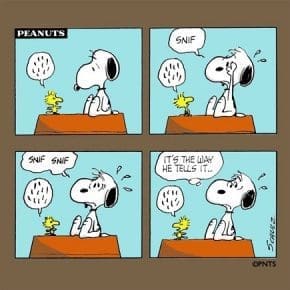Find more true stories to read! Check out our true story links!

Whether you like to read or listen to true stories, we’ve found lots of true story links for you to visit:
Longreads’ name tells you exactly what it offers: longer, more in depth stories. Read “Our Picks,” stories chosen by editors and “Features” that showcases recently published nonfiction. Another category is “Best Of” that offers stories from other years. Longreads also features “Reading Lists” that groups stories into related categories, like walking, estrangement from parents or children, love, parks, even the tarot, for example.The site also lists the source of the story, whether it be from the Washington Post, the Daily Beast, from other well-known sites, or by authors for the longreads.com blog. The site gives you a chance to support great storytelling by becoming a member for a small fee. (Note: Longreads also publishes fiction.) longreads.com
Medium offers “Human stories and ideas,” and says it is “A place to read, write, and deepen your understanding.” A new category that Medium offers is “Featured” that allows you to read stories from publications you follow. Get unlimited access to the best of Medium for less than $1/week. https://medium.com/
Are you a sports fan? Medium.com has introduced The Cauldron, “A place for your intelligent sports stories. Shared.” Read worthwhile sports stories by writers experienced in all kinds of sports. Get unlimited access to the best of Medium for less than $1/week. The Cauldron
-
Want to hear a story in addition to reading it? Read on!
Do you like to tell stories about your life or hear others tell stories live and without notes? The Moth is “an acclaimed not-for-profit organization dedicated to the art and craft of storytelling. Since its launch in 1997, The Moth has presented thousands of stories, told live and without notes, to standing-room-only crowds worldwide.” http://themoth.org/about
Here’s how its website describes Moth shows: “…renowned for the great range of human experience they showcase. Each show starts with a theme, and the storytellers explore it, often in unexpected ways. Since each story is true and every voice authentic, the shows dance between documentary and theater, creating a unique, intimate, and often enlightening experience for the audience.”
If you are not near a Moth storytelling venue, click http://themoth.org/radio to tune in to the Moth Radio Hour in your area.
Two more places to hear people tell the stories of their lives are http://rabbitbox.org/ and www.stoopstorytelling.com. Both foster the art of storytelling, Rabbit Box in Athens, Georgia, and The Stoop Storytelling in Baltimore.
The Stoop Storytelling, whose motto is “Everyone has a story. What’s yours?,” says its mission is to “showcase the extraordinary stories of ‘ordinary people.'” You can check out photos and listen to these stories at http://www.stoopstorytelling.com/shows/past
“Creating community, one story at a time” is the motto of Rabbit Box. Since it began in May, 2012, its stories have made listeners “laugh, weep and marvel at the human spirit” and have brought them “closer to a common understanding, a deeper sense of history and a shared community.” Listen to their stories at http://rabbitbox.org/category/listen/
-
More sites to read true stories!
Brevity Magazine calls itself the “small magazine with large ambitions.” Here’s an excerpt from its About page:
“For more than a decade now, Brevity has published well-known and emerging writers working in the extremely brief (750 words or less) essay form, along with craft essays and book reviews. Though still committed to the mission of publishing new writers, Brevity has enjoyed an embarrassment of recent riches, including the work of two Pulitzer prize finalists, numerous NEA fellows, Pushcart winners, Best American authors, and writers from India, Egypt, Ireland, Spain, Malaysia, and Japan. brevitymag.com
Another nonfiction site is creativenonfiction.org. New Pages (newpages.org) has this to say about Creative Nonfiction:
[Creative Nonfiction] rewards the reader by delivering on its promise: ‘True stories, well told.’
Here’s how Creative Nonfiction defines its genre:
In some ways, creative nonfiction is like jazz—it’s a rich mix of flavors, ideas, and techniques, some of which are newly invented and others as old as writing itself. Creative nonfiction can be an essay, a journal article, a research paper, a memoir, or a poem; it can be personal or not, or it can be all of these.
The words “creative” and “nonfiction” describe the form. The word “creative” refers to the use of literary craft, the techniques fiction writers, playwrights, and poets employ to present nonfiction—factually accurate prose about real people and events—in a compelling, vivid, dramatic manner. The goal is to make nonfiction stories read like fiction so that your readers are as enthralled by fact as they are by fantasy.
Humans of New York began as a photography project in 2010 to photograph 10,000 New Yorkers on the street and “create an exhaustive catalogue of the city’s inhabitants.”
Today, Humans of New York includes quotes and short stories from the lives of thousands of people. According to its website, “Over the past five years, it has also expanded to feature stories from over twenty different countries. The work is also featured in two bestselling books: Humans of New York and Humans of New York: Stories.”
The website also states that it “has over twenty million followers on social media and provides a worldwide audience with daily glimpses into the lives of strangers on the streets of New York City.”
Stay tuned for more true story websites coming soon!


